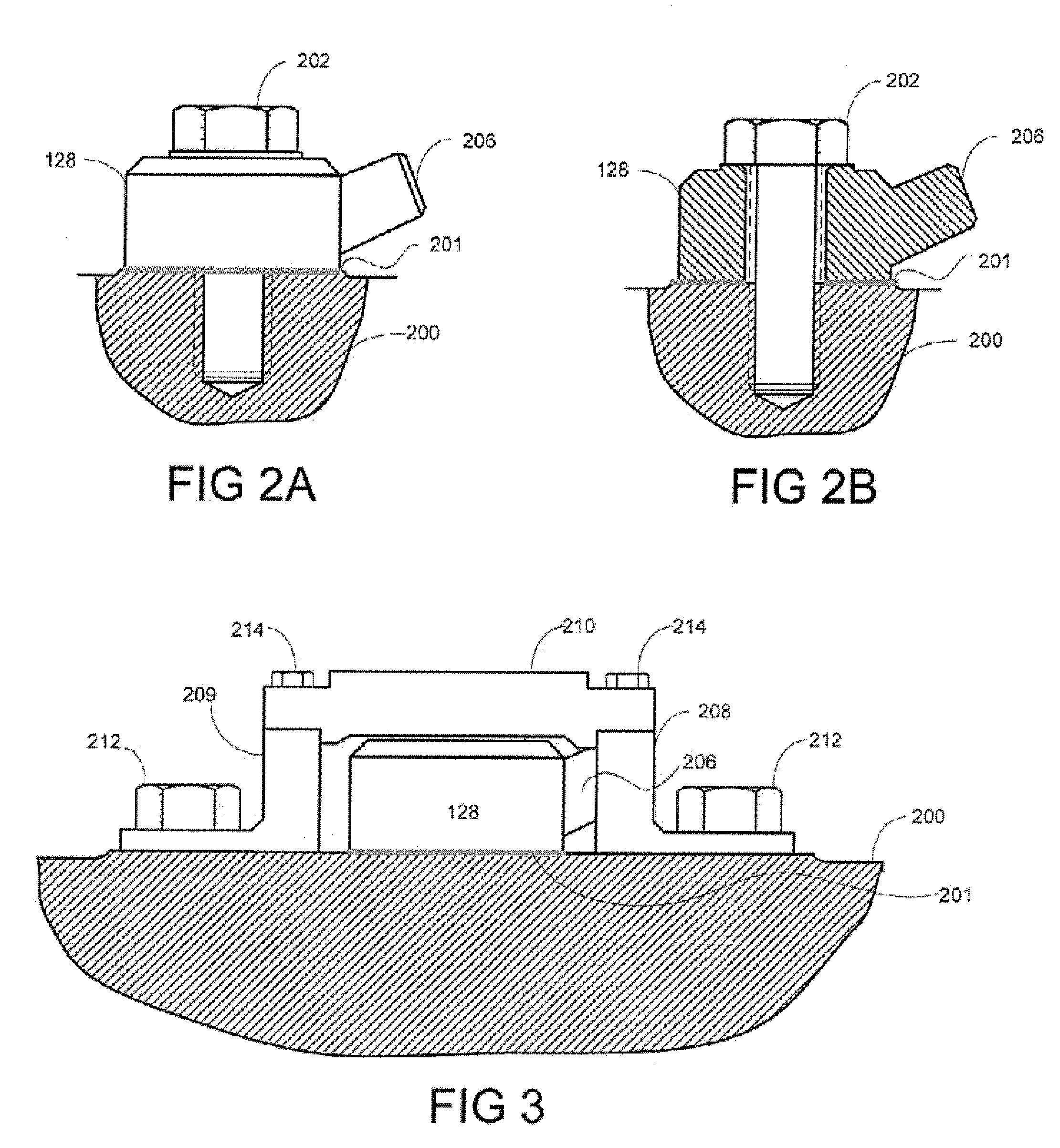Method of mounting an accelerometer on an internal combustion engine and increasing signal-to-noise ratio
a technology of accelerometer and internal combustion engine, which is applied in the direction of engine ignition, structural/machine measurement, analog and hybrid computing, etc., can solve the problems of engine knock, engine performance decline, engine serious damage, etc., and achieve the effect of increasing the signal output's signal-to-noise ratio
- Summary
- Abstract
- Description
- Claims
- Application Information
AI Technical Summary
Benefits of technology
Problems solved by technology
Method used
Image
Examples
Embodiment Construction
)
[0029]An accelerometer is a device for measuring acceleration. Persons skilled in the technology will understand that there are many different types of accelerometers. Accelerometers with a piezoelectric element have been developed for detecting engine knock and such sensors are an example of one type of accelerometer that can be used by the disclosed method for the presently disclosed application. With such sensors, the piezoelectric element produces a charge when a directional force acts on it, and the charge correlates to linear displacement in the direction of the force. Other types of accelerometers, such as surface micromachined capacitive sensors are not known to be commercially available in a form suitable for the presently disclosed application but like other types of accelerometers, they could be adapted to be made in a suitable form for this new application. In preferred embodiments of the method and the disclosed engine, the accelerometer is an electromechanical device ...
PUM
 Login to View More
Login to View More Abstract
Description
Claims
Application Information
 Login to View More
Login to View More - R&D
- Intellectual Property
- Life Sciences
- Materials
- Tech Scout
- Unparalleled Data Quality
- Higher Quality Content
- 60% Fewer Hallucinations
Browse by: Latest US Patents, China's latest patents, Technical Efficacy Thesaurus, Application Domain, Technology Topic, Popular Technical Reports.
© 2025 PatSnap. All rights reserved.Legal|Privacy policy|Modern Slavery Act Transparency Statement|Sitemap|About US| Contact US: help@patsnap.com



